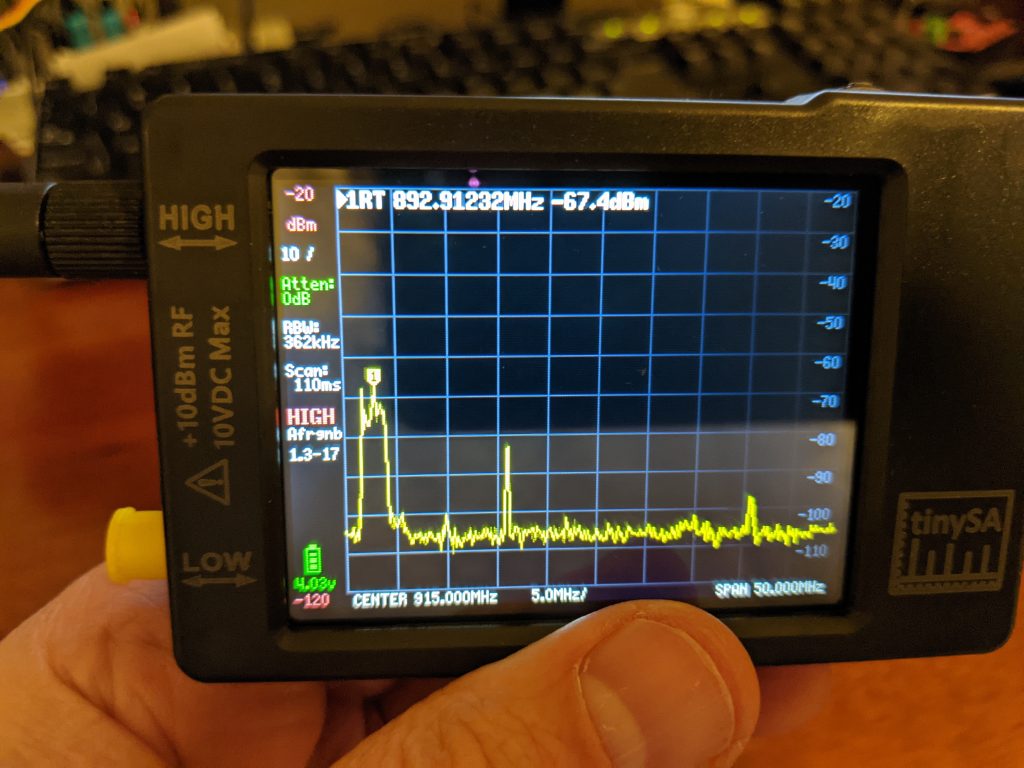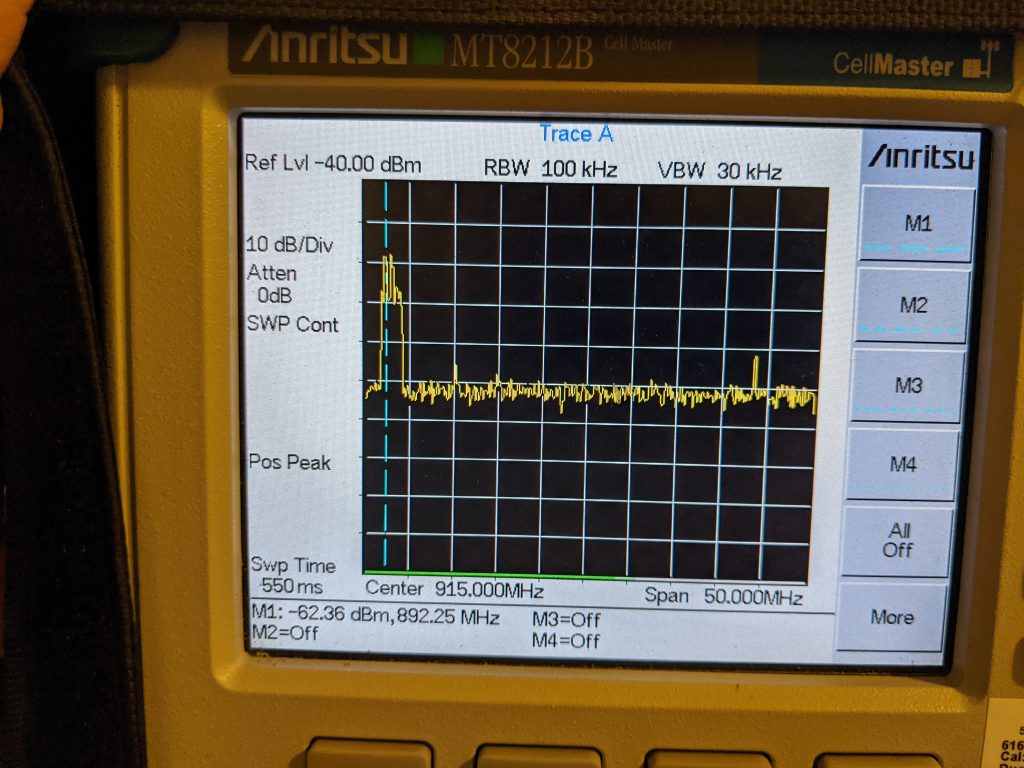I have been waiting for a long time for a usable low-cost spectrum analyzer and it looks like that wait is over
Update Jan 2023: I sold the original TinySA and upgraded to a TinySA Ultra. It is more expensive (about $140), but much more capable. The Ultra provides an extended frequency range up to 6GHz (level-calibrated to 5.3GHz) and adds several nice features including a remarkably functional bonus signal generator (cw, am, fm) and a 4″ LCD screen (welcome eye-relief for folks with high-mileage). This is not a toy; it has its limitations, but the specs now make it quite usable (PN=-92dBc/Hz, 2dB absolute amplitude accuracy, 1ppm frequency standard, 200Hz min RBW). So you can observe signals with reasonable accuracy and good resolution.
As before, I bought from R&L Electronics (the authorized US outlet – be careful to avoid poor-performing clones). I’ll do some testing with it soon, but you can see a few quick tests below.
Some resources:
- Tiny SA Wiki
- YouTube channel (with lots of good usage info)
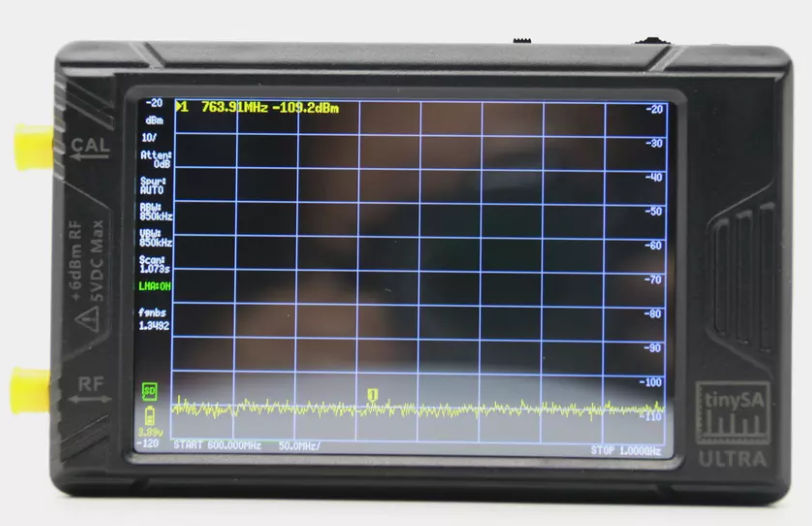
The front-end is better but still easily over-driven (and damaged above +10dBm) so I usually use it with a 20dB fixed attenuator in line. As an example of how it compares to higher-end gear, here’s a 915MHz signal FM modulated at 5kHz shown (frozen) on the TinySA Ultra and on a Siglent SVA1015X. Peak measurements are within 1.5dB and 100Hz. Not bad!
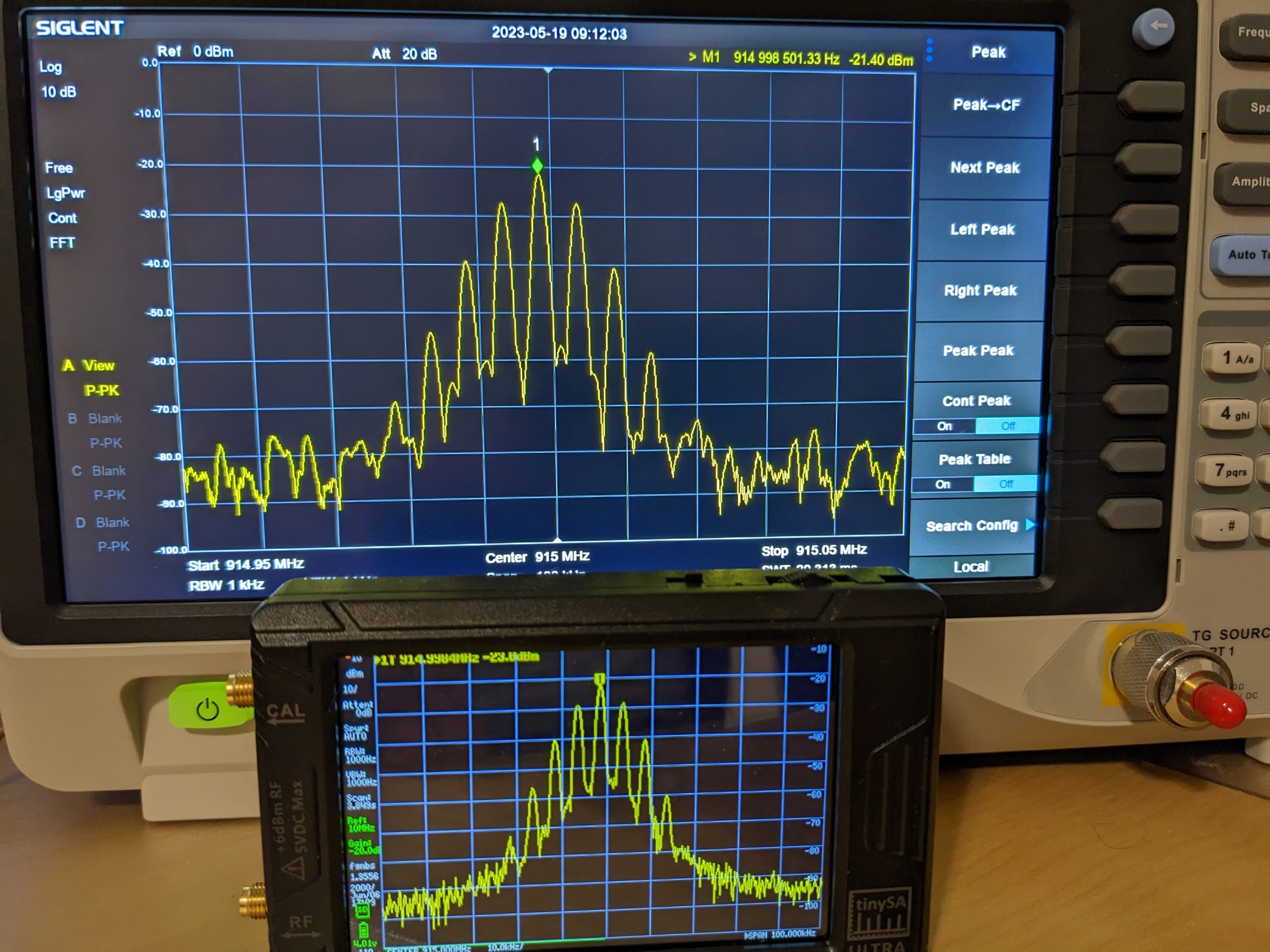
I was recently looking for RF interference in the WiFi band and ran the tinySA Ultra and a (much more expensive) Anritsu BTSMaster for a bit with both in max hold mode to get a feel for what was out there and I was pleased with the results.The pictures won’t match precisely due to the nature of sweep times and max hold, but the results were quite good and immediately showed the strong channel 1 signal with fairly good accuracy on both frequency and amplitude. I’m quite fond of this little SA.
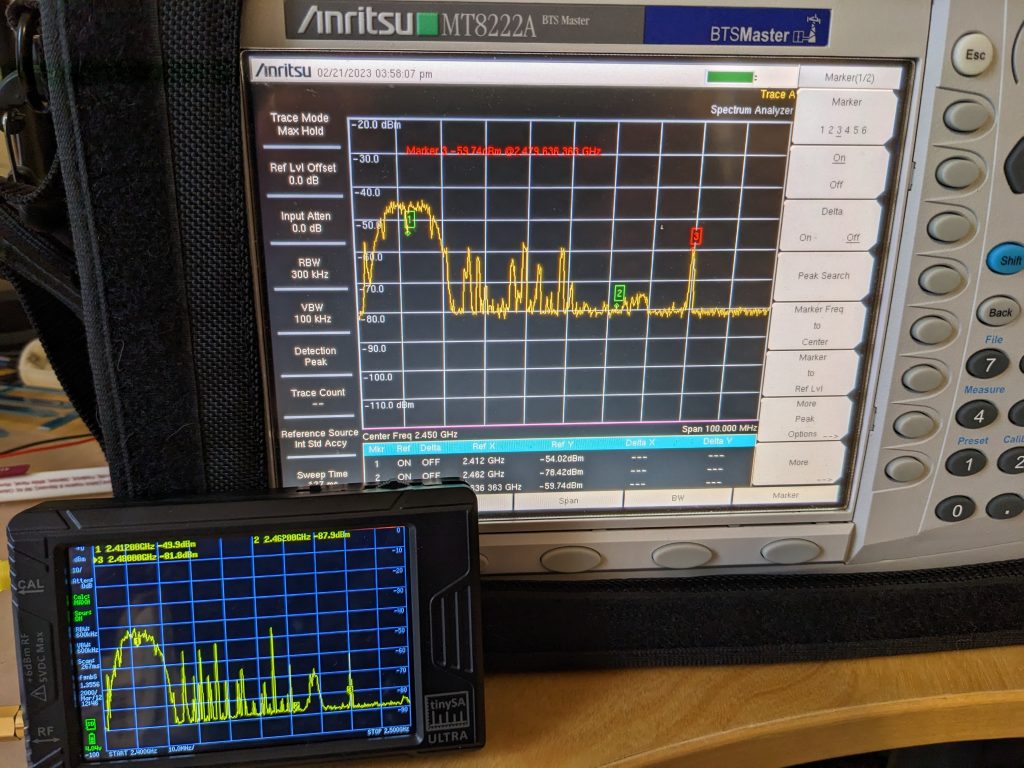
There is also a TinySA app in development; it lets you connect to the TinySA from your Windows PC and capture traces; it’s a little rough at present and the sweep rate gets very slow when you are capturing to PC at low spans (in part because the default is 1k points), however it’s still nice to be able to capture traces directly. Here’s an example of a 433MHz signal FM modulated at 1.5kHz
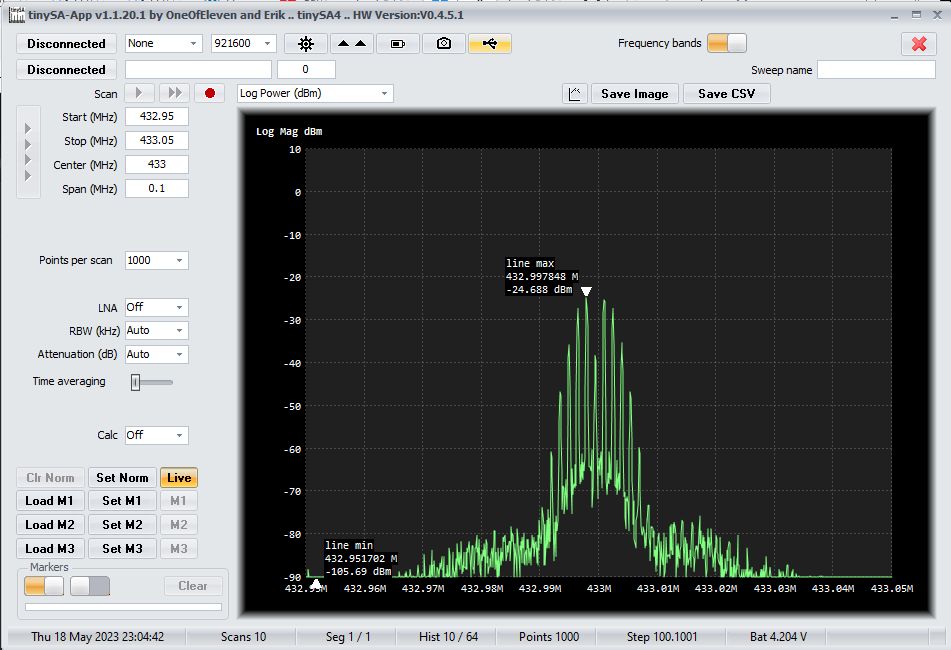
OLDER VERSION (note: below is about the older TinySA, not the Ultra)
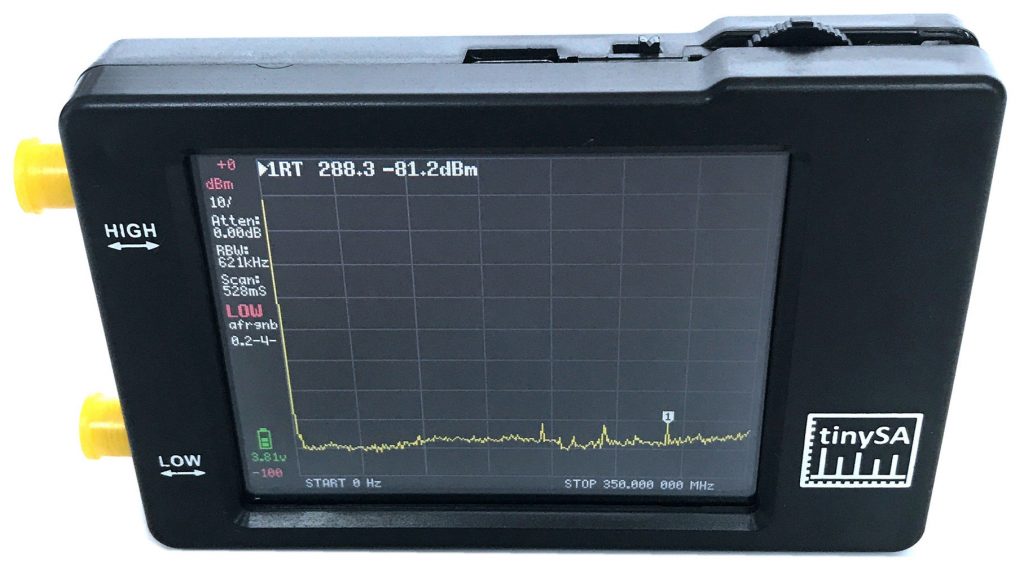
I bought a TinySA spectrum analyzer for $55 from R&L Electronics (one of the official dealers). If you get one, try to use the official sites; there are lots of bad clones out there. The TinySA is, as the name implies, a tiny, battery-powered, touch-screen, 100kHz – 960MHz spectrum analyzer. I have been very pleasantly surprised by its performance.
It has its limitations, but it is the first usable low-cost SA I’ve found for looking at sub-GHz FM signals. There are plenty of low-cost toys out there (see my earlier post regarding the “Simple Spectrum Analyzer”) that claim to do spectrum analysis, but they have always had fatal flaws (inaccurate or horribly coarse resolution bandwidth). This one has quite good frequency and amplitude accuracy out of the box and a usable 3kHz RBW.
It has some limitations too (But for goodness sakes, we’re talking about a pocket-sized spectrum analyzer for $55!!!):
- 960MHz max frequency
- 3kHz resolution bandwidth (RBW)
- Amplitude uncertainty seems to be around 2dB
- Easily over-driven (claims +10dBm max input, but works much better below -10dBm)
Below are some pictures showing the SA in action, including both strengths and limitations.
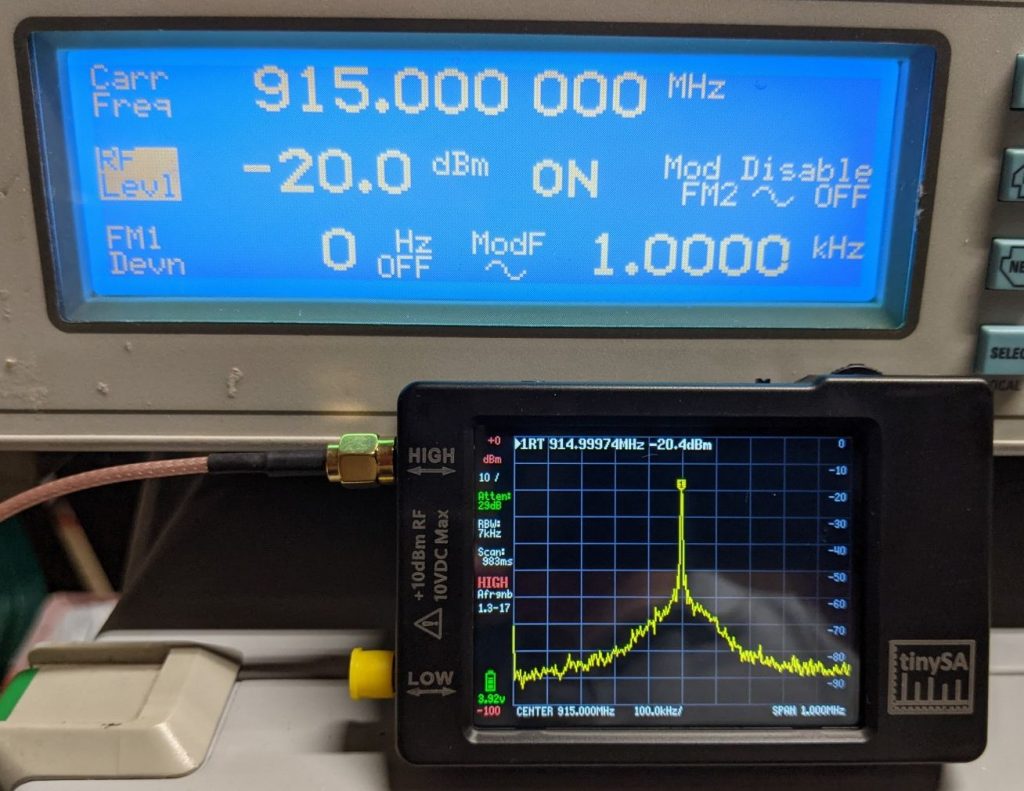
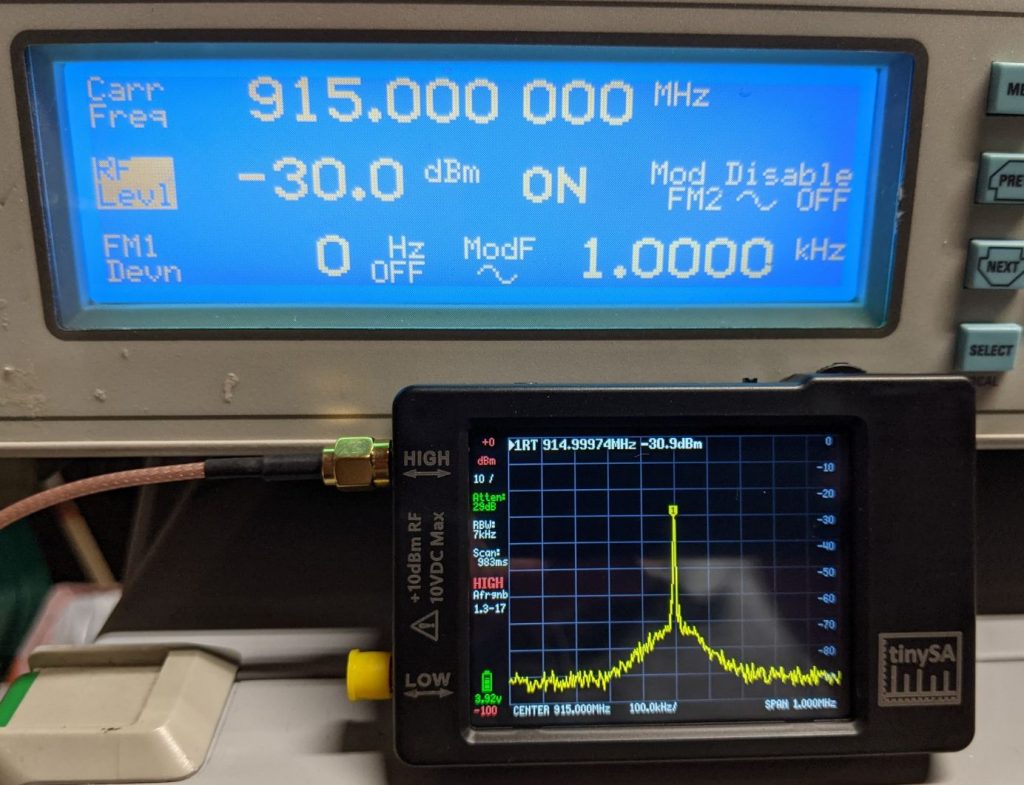
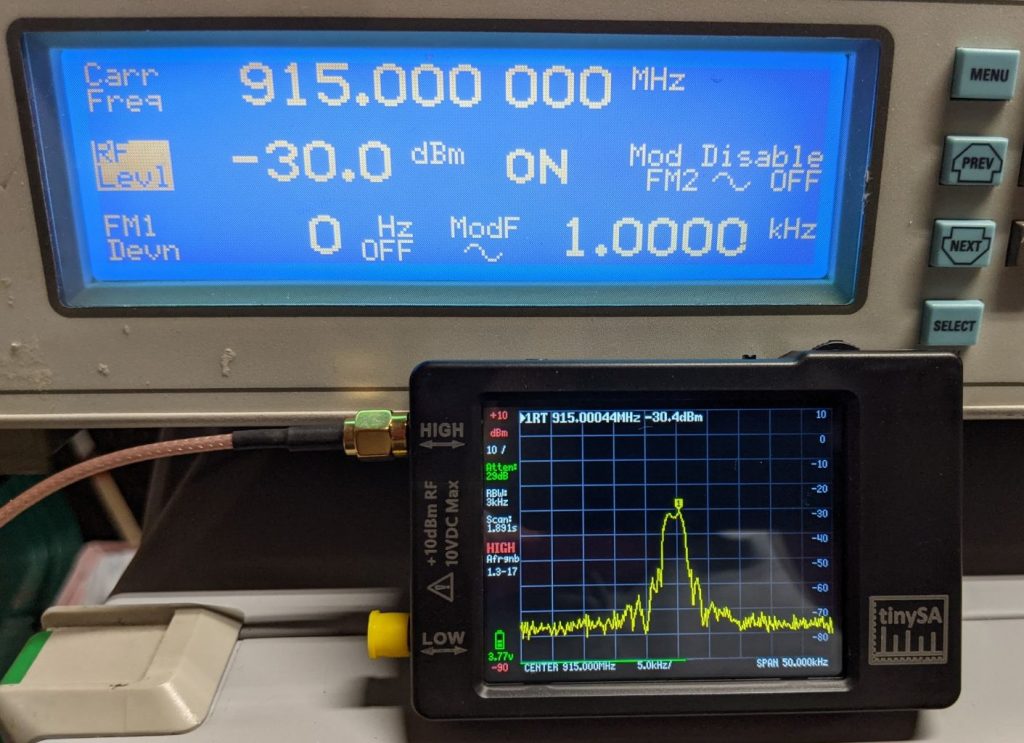
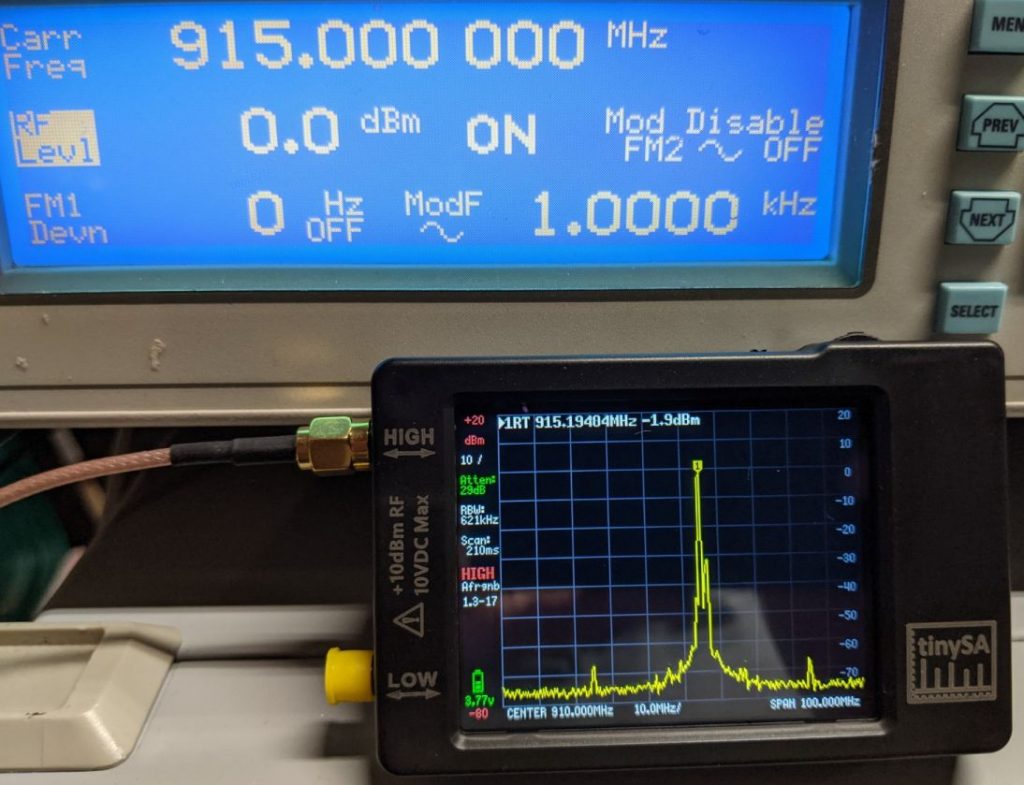
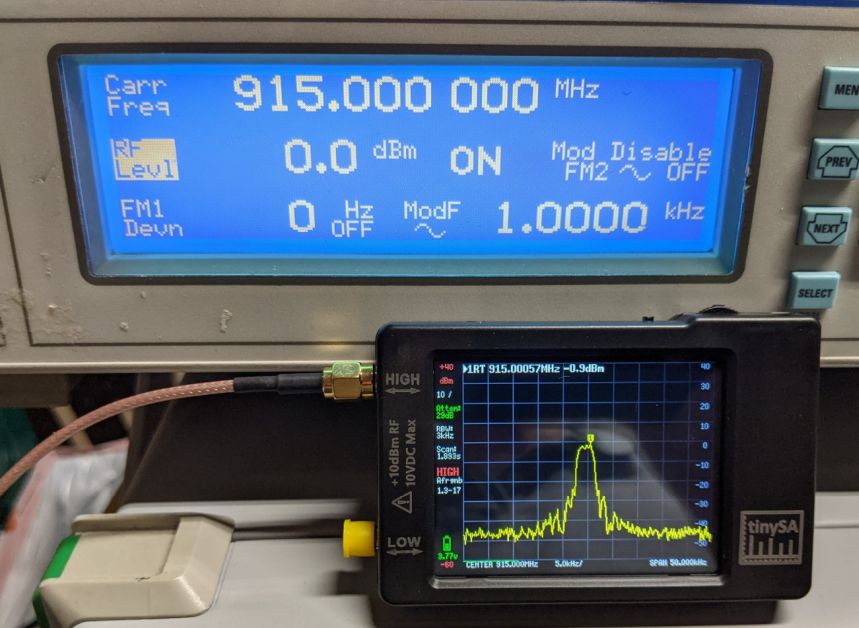
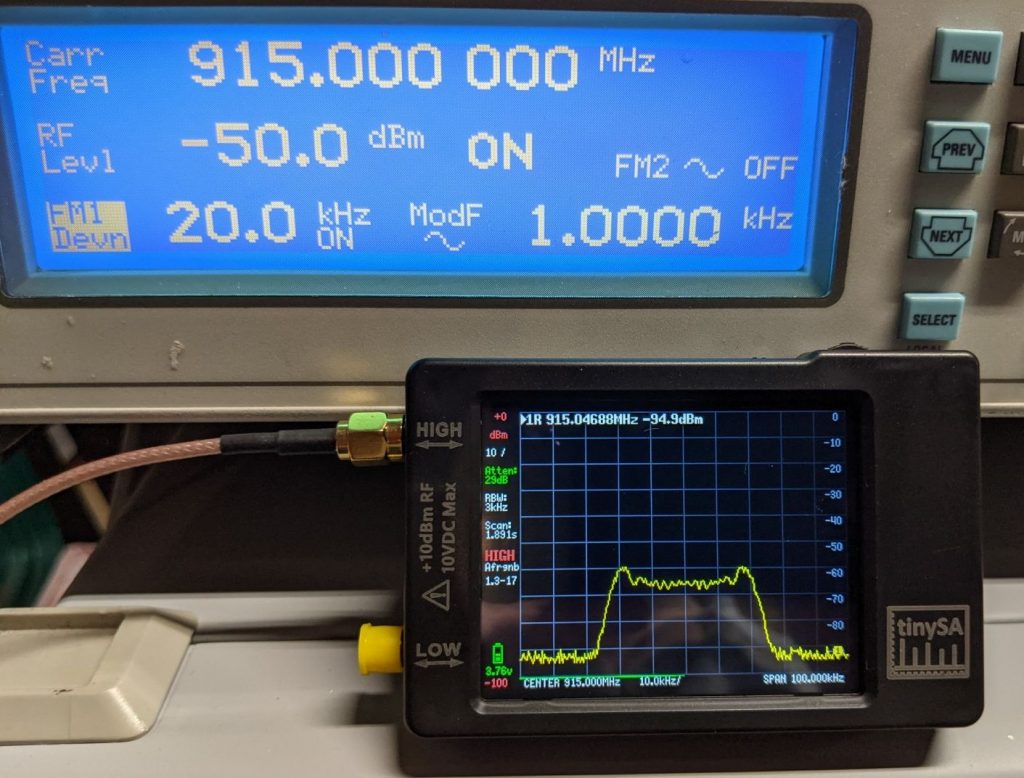
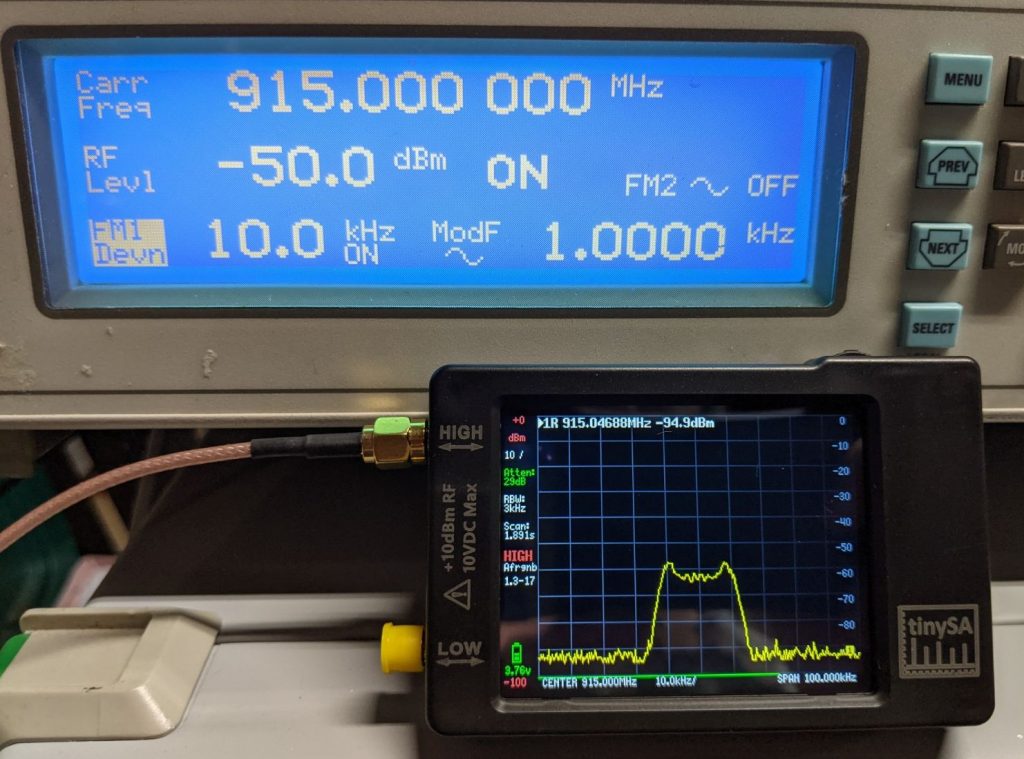
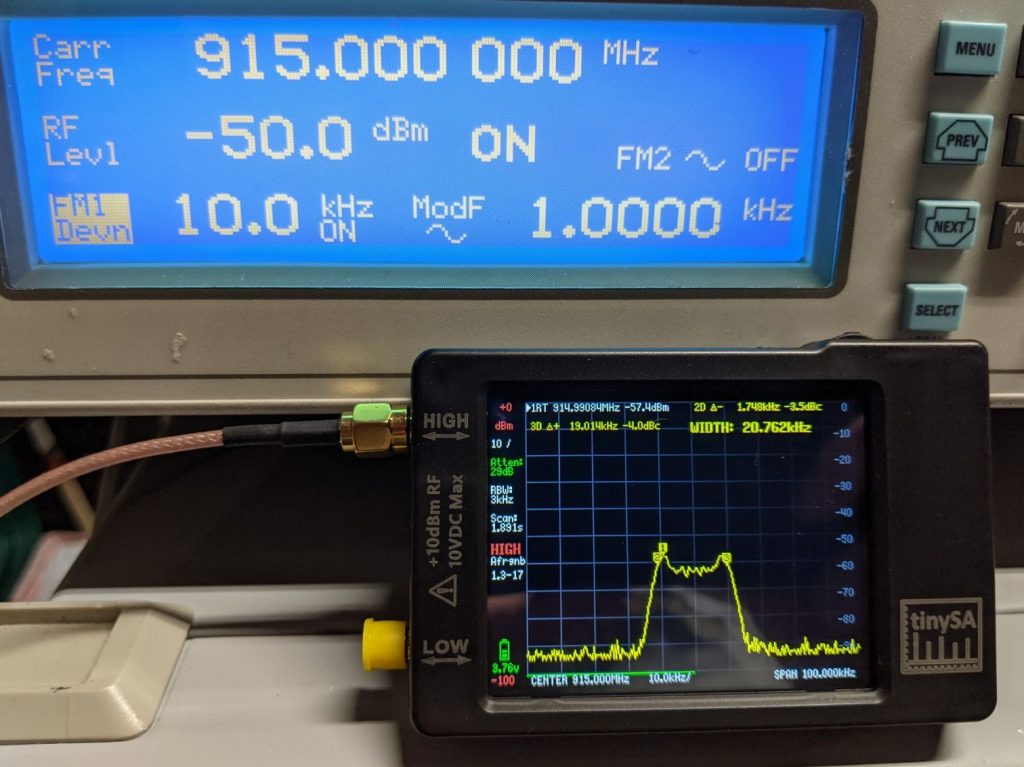
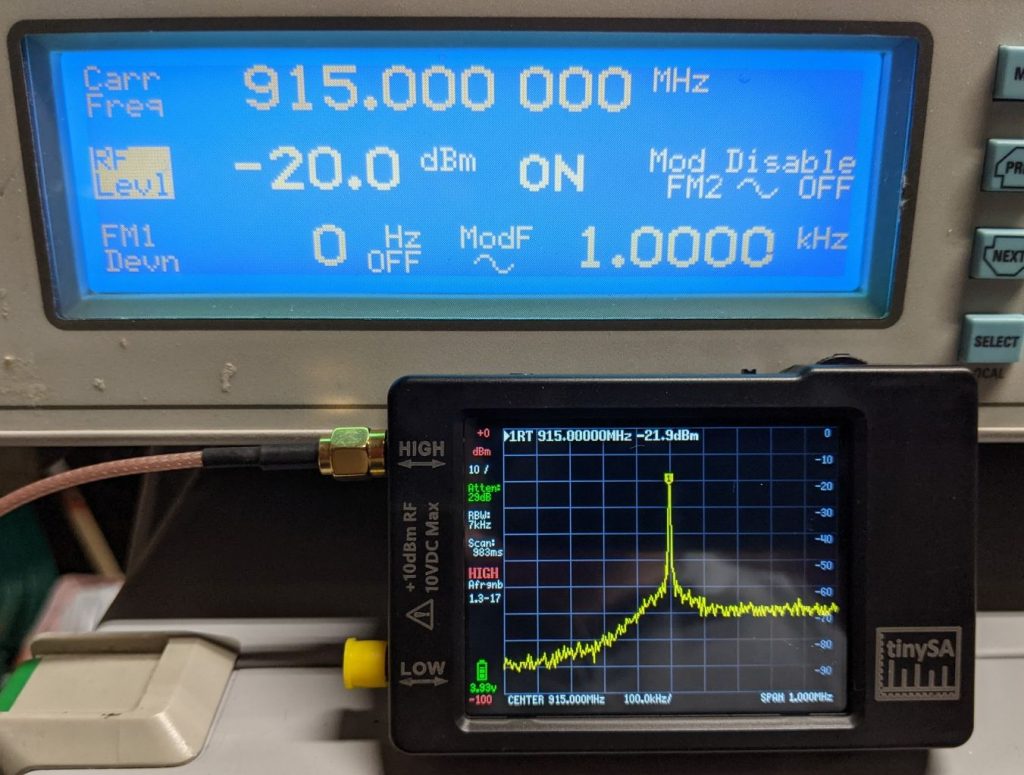
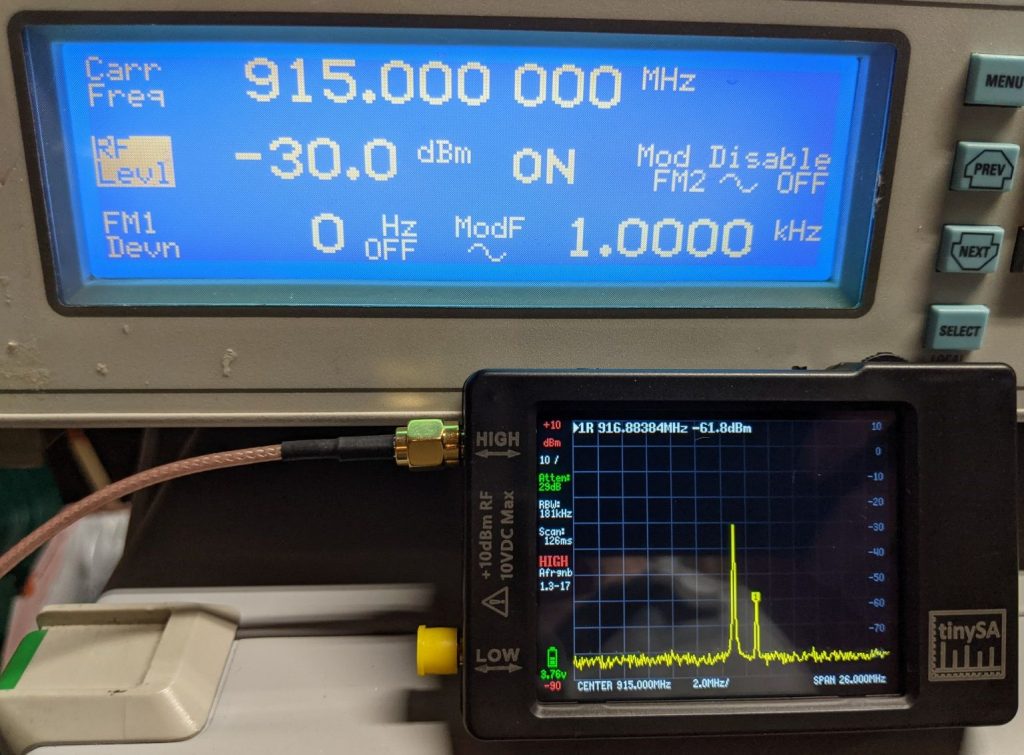
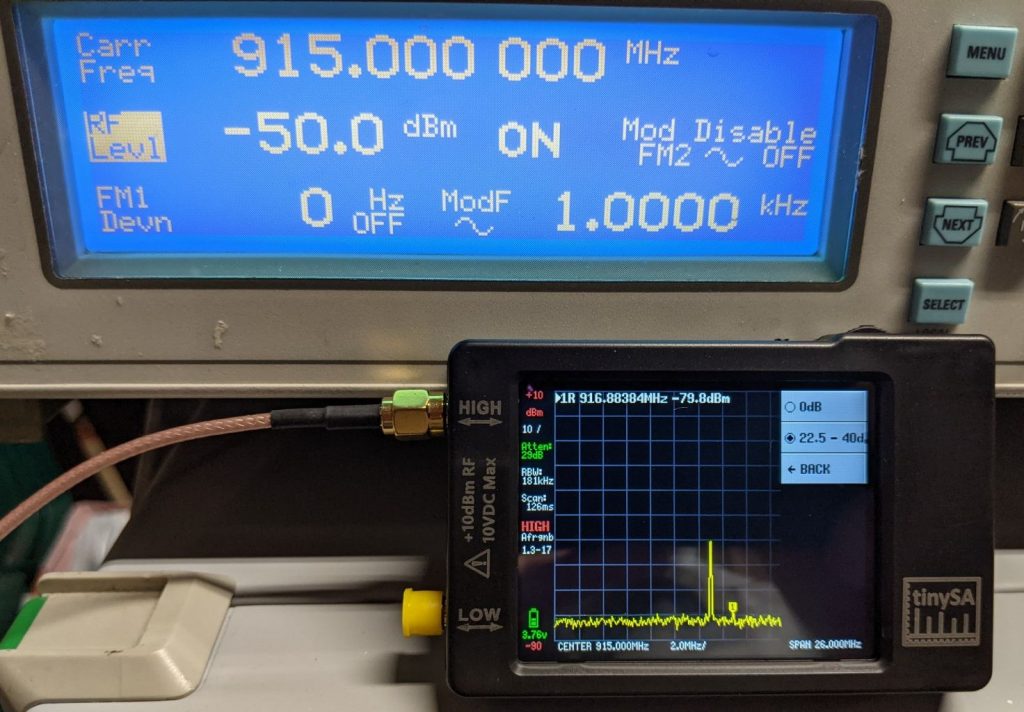
For comparison, here is what the signal generator output looks like on a higher-end piece of test gear (Anritsu MS8609A):
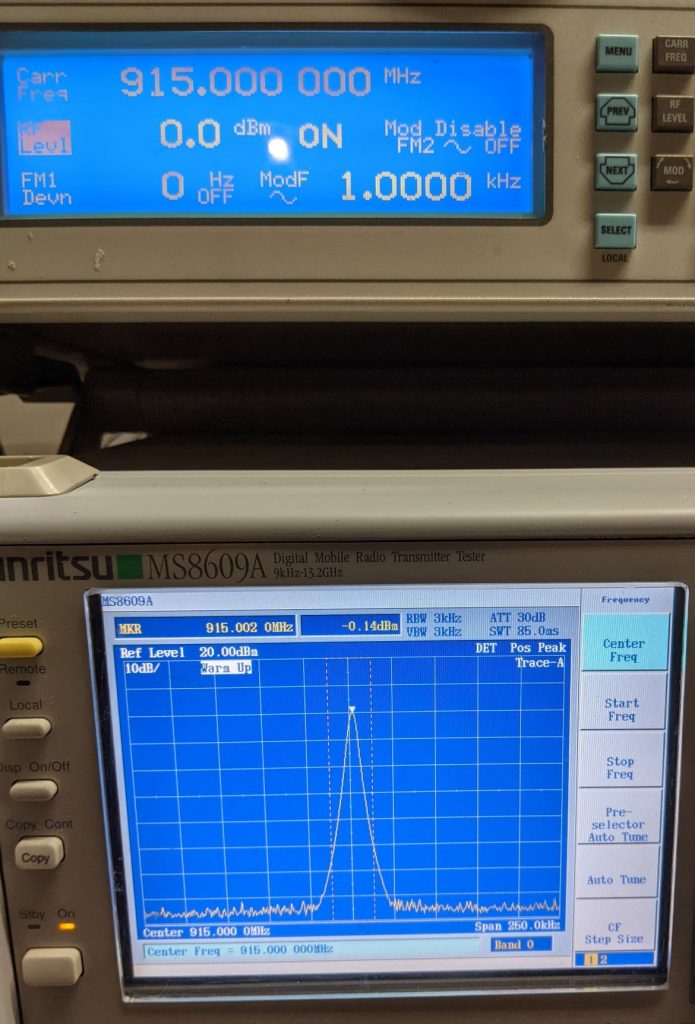
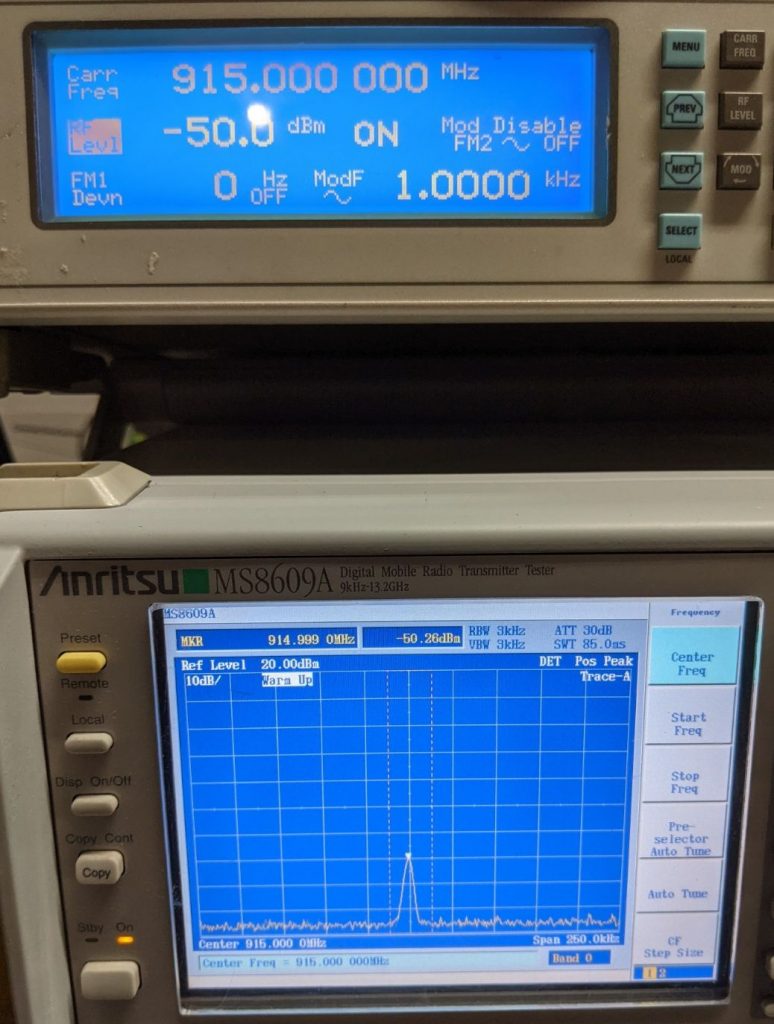
I do a lot of work in the 902-928MHz ISM band which is often impacted by strong nearby cellular signals. I looked at the 50MHz span around 915MHz using both a TinySA and an Anritsu CellMaster. The TinySA did an outstanding job, showing the same results but with much greater dynamic range (the Anritsu is meant as a cell tower service tool and supports looking at much stronger signals). On both analyzers, you can see a strong LTE signal at 892.5MHz. Measurements were using a Linx sleeved dipole centered at 915MHz.
